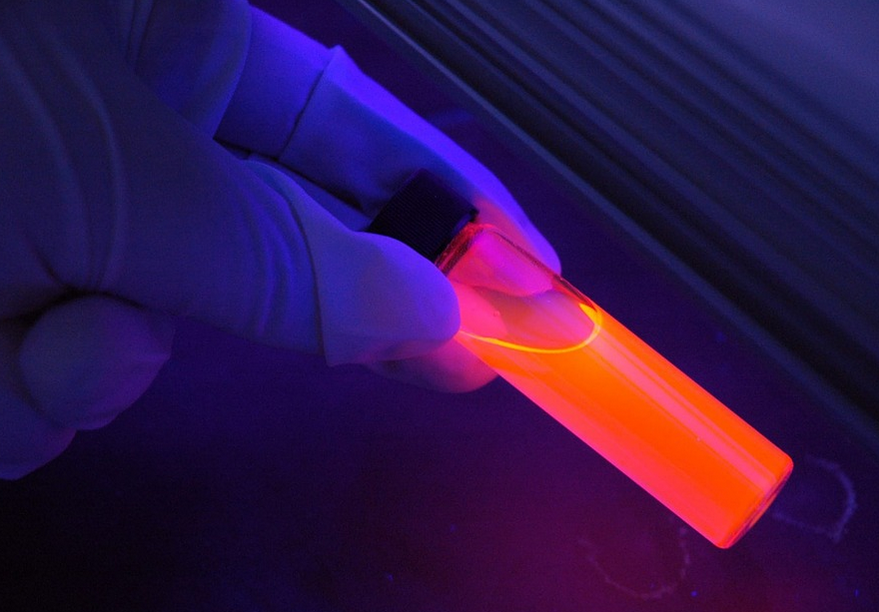Luminol in the forensic science
DOI:
https://doi.org/10.20873/jbb.uft.cemaf.v3n4.rogiskisilvaKeywords:
luminol, chimiluminescence, crime scene, occult blood, criminalistics, blood stainAbstract
In a crime scene, the collection of evidence and a subsequent laboratory analysis compose the fundamental steps to allow the expert to reveal the truth for the final verdict in a jury and to bring back the comfort to the victim’s family. Bloodstains are usually found and sent to laboratories as a vestige to unravel the origin of the material. However, some scenes are modified in order to conceal the real culprit for the criminal act. For these cases, the luminol reagent can be useful. This test is very often used to visualize occult blood. Luminol is considered the most sensitive test once it can identify the blood presence in scale of nanograms. When this reagent comes into contact with blood,the light emission occurs through a phenomenon known as chemiluminescence. This luminescence can be produced by other interfering compounds, leading to a misinterpretation for the presence of blood. Despite this shortcoming, the present review article highlights the indispensability of the reagent luminol on a crime scene.
References
ALBERTIN, R.; ARRIBAS, M. A. G.; BASTOS, E. L.; RÖPKE, S.; SAKAI, P. N.; SANCHES, A. M. M.; STEVANI, C. V.; UMEZU, I. S.; YU, J.;
BAADER, W. J. Quimiluminescência orgânica: alguns experimentos de demonstração para a sala de aula. Química Nova, v. 21, n. 6, p. 772-779, 1998.
BARNI, F.; LEWIS, S. W.; BERTI, A.; MISKELLY, G. M.; LAGO, G. Forensic application of the luminol reaction as a presumptive test for latent blood detection. Talanta, v. 72, 896-913, 2007.
BAYNES, J. W.; DOMINICZAK, M. H. Bioquímica Médica, 2 ed. Rio de Janeiro: Elsevier, 2009, 566p.
BERGERVOET, P. W. M.; RIESSEN, N. V.; SEBENS, F. W.; ZWET, W. C. V. D. Application of the forensic Luminol for blood in infection control. Journal of Hospital Infection, v. 68, p. 329-333, 2008.
BLUM, L. J.; ESPERANÇA, P.; ROCQUEFELTE, S. A new high-performance reagent and procedure for latent bloodstain detection based on luminol chemiluminescence. Canadian Society of Forensic Science, v. 39, n. 3, p. 81-110, 2006.
CASTELLÓ, A.; FRANCÉS, F.; VERDÚ, F. Bleach interference in forensic luminol test on porous surfaces: More about the drying time effect. Talanta, v. 77, p. 1555-1557, 2009.
CREAMER, J. I.; QUICKENDEN, T. I.; CRICHTON, L. B.; ROBERTSON, P.; RUHAYEL, R. Attempted cleaning of bloodstains and its effect on the forensic test. Luminescence, v. 20, p. 411-413, 2005.
CREAMER, J. I.; BUCK, A. M. The assaying of haemoglobin using luminal chemilumencence and its application to the dating of human skeletal remains, Luminescence, v. 24, p. 311-316, 2009.
DOREA, L. E. As manchas de sangue como indício em local de crime. 2.ed. Porto Alegre: Sagra- Luzzato, 1995, 96p.
GARTNER, L. P.; HIATT, J. L. Tratado de histologia. Rio de Janeiro (RJ): Guanabara Koogan; 2007.
HENRY, J. B. Diagnósticos clínicos e tratamentos por métodos laboratoriais. 18th edition. Mande: São Paulo, 1999.
KAI, M.; OHTA, K.; KURODA, N.; NAKASHIMA, K. Chemiluminescence and Bioluminescence in DNA Analysis. In: CAMPAÑA, A. M. G.; BAEYENS, W. R. G. Chemiluminescence in analytical chemistry, p. 551-566, 2001.
MOREIRA, L. M.; MORAES, P. C. G.; MENDONÇA, J. P. R. F.; GUIMARÃES, L.; LYO, J. P.; AIMBIR, F.; POLI, A. L.; IMASAT, H. Hemoglobina extracelular gigante de glossoscolex paulistus: um extraordinário sistema supramolecular hemoproteico, Química Nova, v. 34, p. 119-130, 2011.
RAMSTHALER, F.; KREUTZ, K.; ZIPP, K.; VERHOFF, M. A. Dating skeletal remains with luminol-chemiluminescence. Validity, intra-and- interobserver error, Forensic Science International, v. 187, p. 47-50, 2009.
RAMSTHALER, F.; EBACH, S. C.; BIRNGRUBER, C. G.; VERHOFF, M. A. Postmortem interval of skeletal remain through the detection of intraosseal hemin traces. A comparison of UV-fluorescence luminol, Hexagon-OBTI, and Combur test, Forensic Science International, v. 36, p. 153 -160, 2011.
TOBE, S. S.; WATSON, N. L.; DAIÊD, N. N. Evaluation of six presuntive tests for blood, their specificity, sensitivity and effect on high molecular- weight DNA. Journal Forensic Science, v. 52, p. 102-109, 2007.

Published
How to Cite
Issue
Section
License
Copyright (c) 2024 - Journal of Biotechnology and Biodiversity

This work is licensed under a Creative Commons Attribution 4.0 International License.
Authors who publish with this journal agree to the following terms:
Authors retain copyright and grant the journal right of first publication with the work simultaneously licensed under a Creative Commons Attribution License (CC BY 4.0 at http://creativecommons.org/licenses/by/4.0/) that allows others to share the work with an acknowledgement of the work's authorship and initial publication in this journal.
Authors are able to enter into separate, additional contractual arrangements for the non-exclusive distribution of the journal's published version of the work (e.g., post it to an institutional repository or publish it in a book), with an acknowledgement of its initial publication in this journal.
Authors are permitted and encouraged to post their work online (e.g. in institutional repositories or on their website) prior to and during the submission process, as it can lead to productive exchanges, as well as earlier and greater citation of published work (Available at The Effect of Open Access, at http://opcit.eprints.org/oacitation-biblio.html).


